Nice – The Old Town
A small triangle of the city of Nice exists, what was originally the old city. If one were to trace it on a map, they would start from the Petit Train monument along the coast, then around Castle Hill, down the Promenade du Paillon (which actually is a covered up old river) and back to the monument. Within this triangle, the visitor will notice the streets are ever so narrower and older, this is the old city.
The best thing to do here, is just take a half a day, usually around lunch so you can enjoy one of the many restaurants. There are also plenty of shops and other tourist venues you can visit, to satisfy any knickknack itch you may have.
We walked along the Promenade, up to Giuseppe Garibaldi Square, then to Castle Hill and made our way back down the hill to visit the old city, after having lunch of course.
Niçose Cuisine
In Nice some of the best restaurants to visit specialize in the Niçose style of cooking. This is a blend of French and Italian influences that go back many generations. They offer daily specials and usually an adequate, if not great selection of French and Italian wines.
Restaurant Voyageur

One very good restaurant that is the epitome of Niçose style, is Restaurant Voyageur. Not only is the food great, but the service is very good and they understand English very well.
Restaurant Saëtone
Another very good restaurant is Saëtone. This one is rather small, so you must get there early if you hope to get a seat for lunch. They usually have a very dedicated lunch crowd and every chair and table will be full by the time lunch hour is in full swing.
Both of these are situated on Rue d’Alsace-Lorraine. Of course, before heading out always check the times for when they are open and have a backup plan. You can always get there to find the restaurant to be closed, for whatever strange reason. We found the Voyageur to be the more dependable of the two.
Museum Marc Chagall
A short walk from our hotel is the National Museum of Marc Chagall. We had to take a circuitous route via the Avenue Biassini to get there, but it wasn’t too much of a problem. If you are walking, it is on a hill, so keep that in mind.
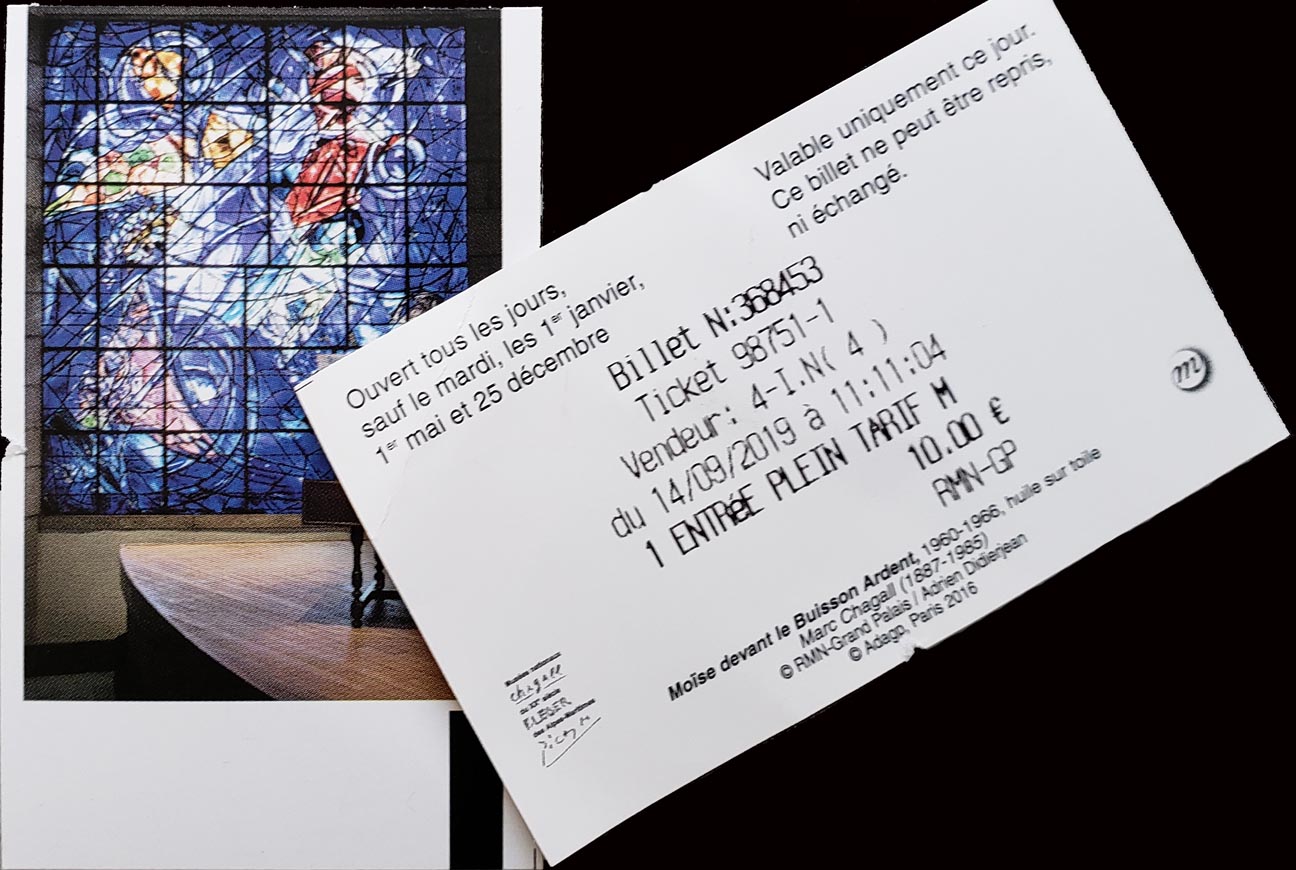
The entrance fee for the museum is at this time 10€, so we bought tickets for two plus one (Ericka).
The works by Chagall include most of his Bible-inspired works, including Noah’s Ark, Descent from the Cross and Adam and Eve Expelled from Paradise.
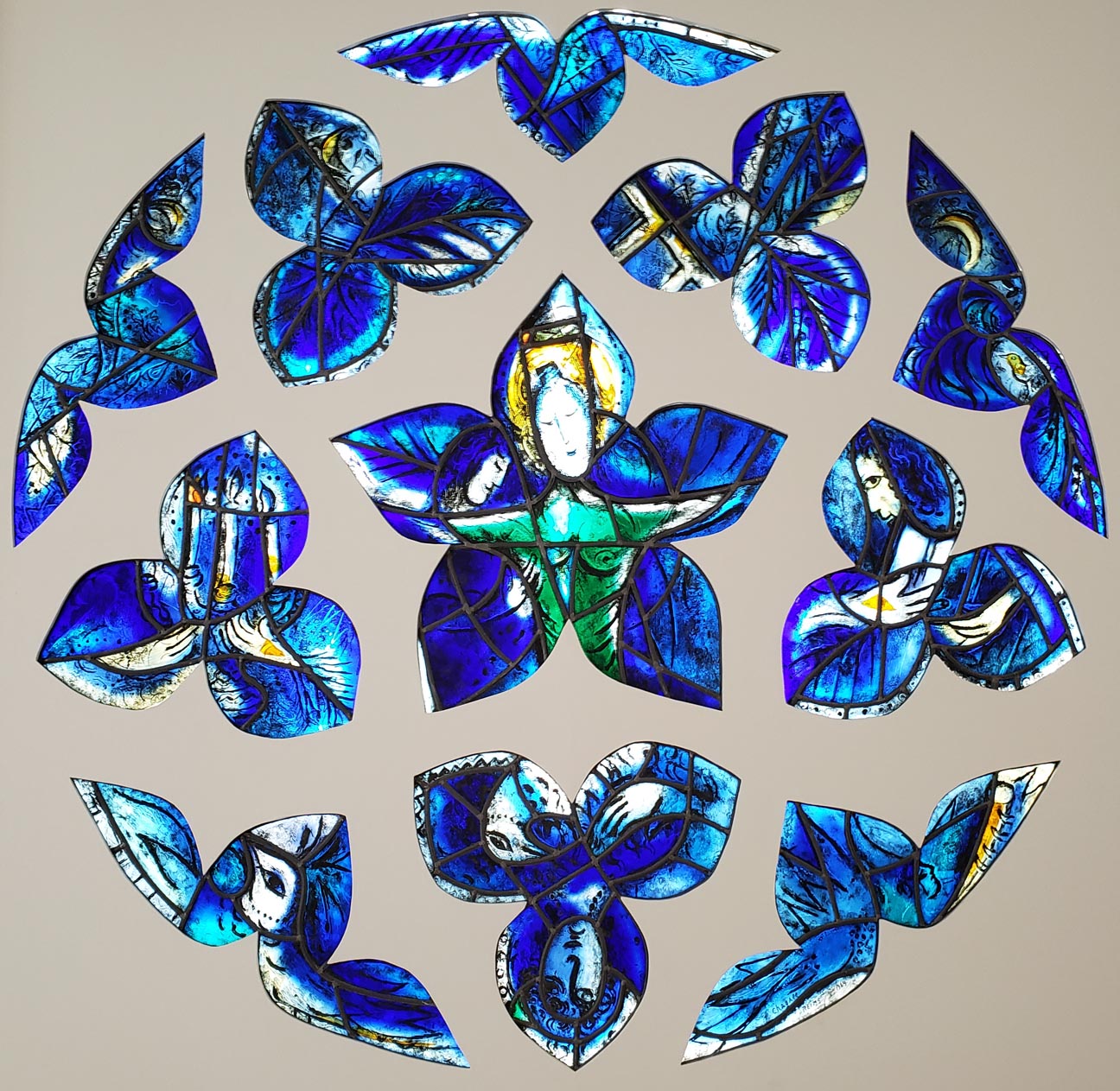
There is also the blue rose testing window that was created for his work, for the Metz Cathedral.
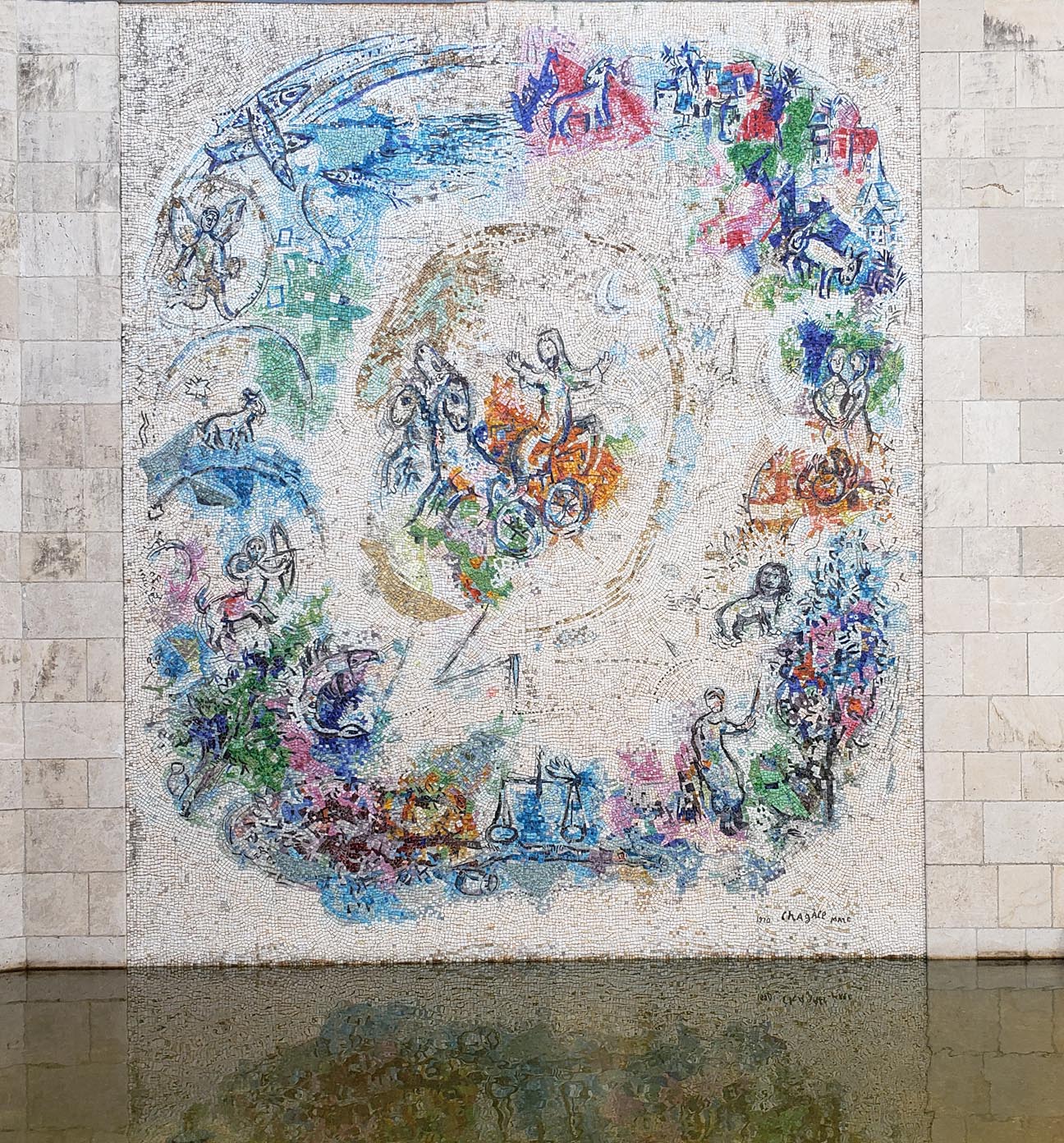
In a far corner, there is also a wonderful mosaic across a reflecting pond, where one can quietly sit in the room and contemplate the mandala.
Of course, the best and my personal favorites are the blue stained glass windows. These are fantastic and remind me of the stained glass windows of Saint Stephan’s Church in the Altstadt of Mainz, Germany.
Clément Cogitore
While we were in Nice this young visual artist and movie maker had some very interesting displays. Some may not like his artistic talents, since they usually display less color and movements, and may appear almost machine-like. But those who enjoy movies and computer games with a dystopian twist will probably be captivated by them. What follows has been broken up to make just one of the videos I saw there easier to upload.
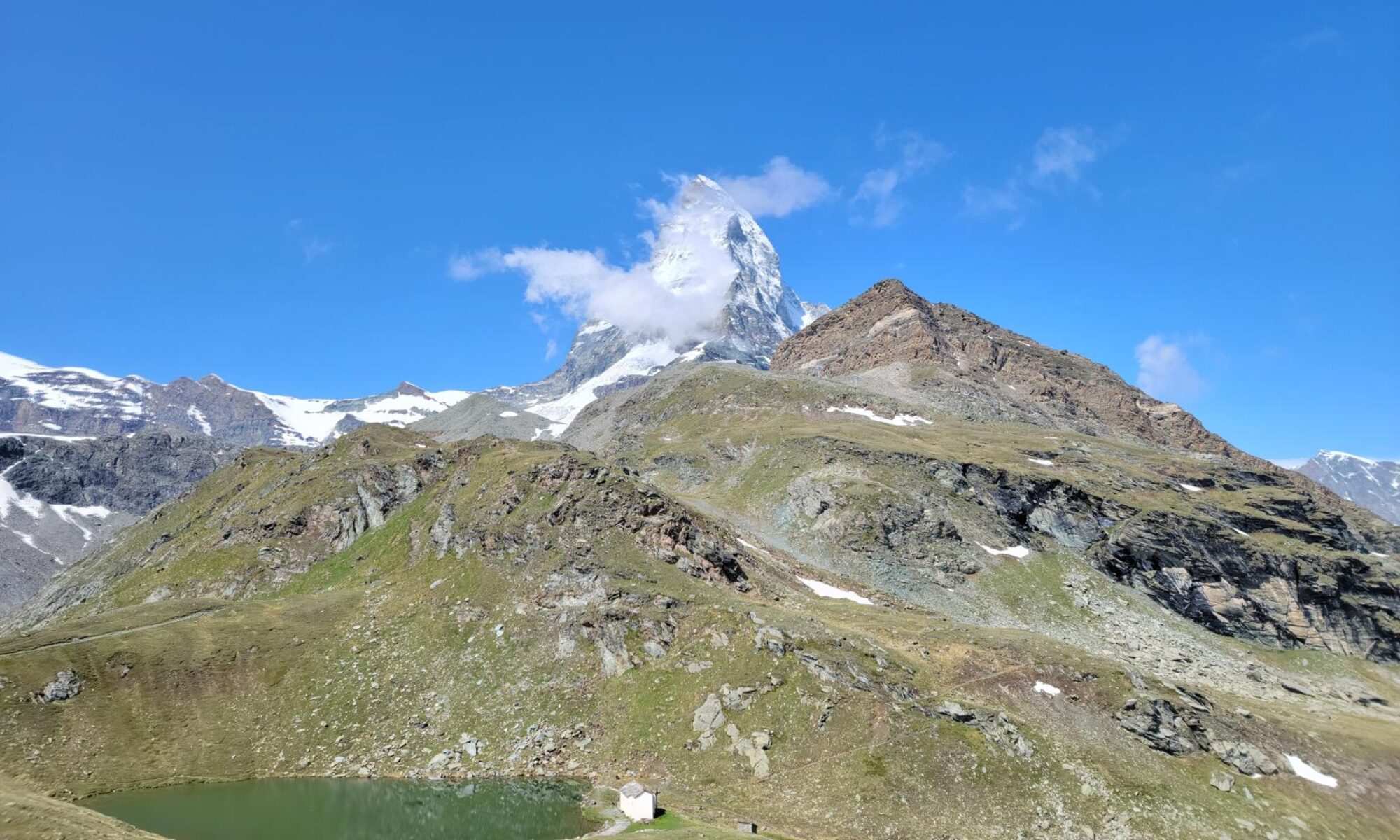
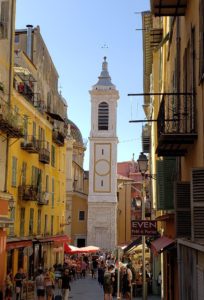
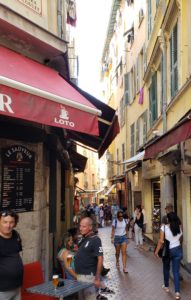
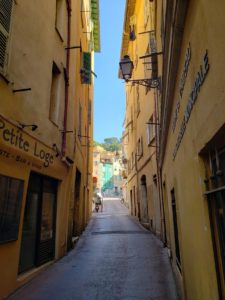
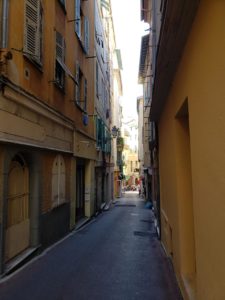

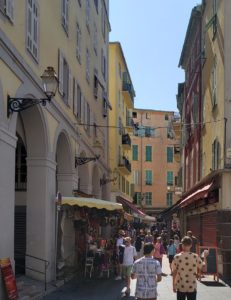

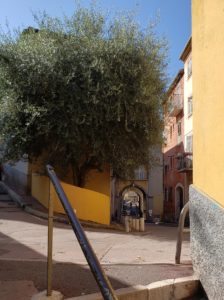
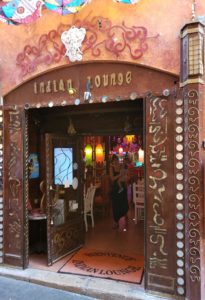
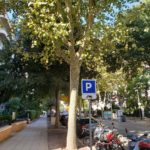
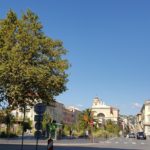
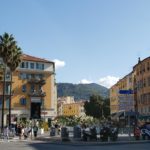
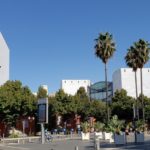
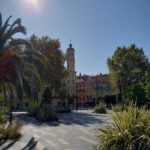
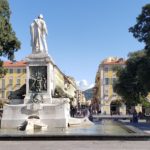
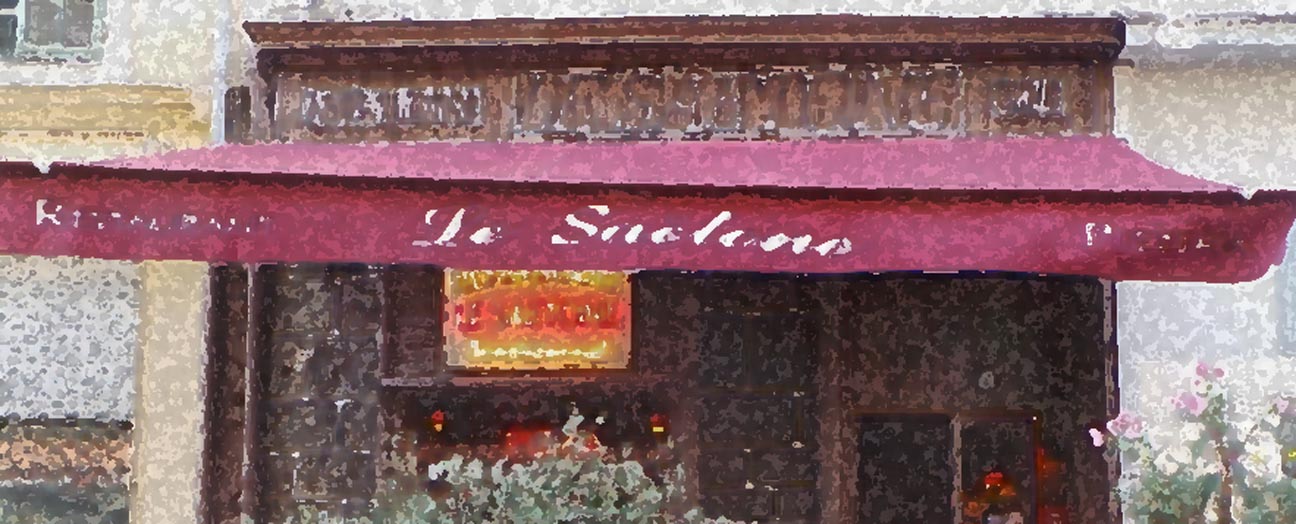
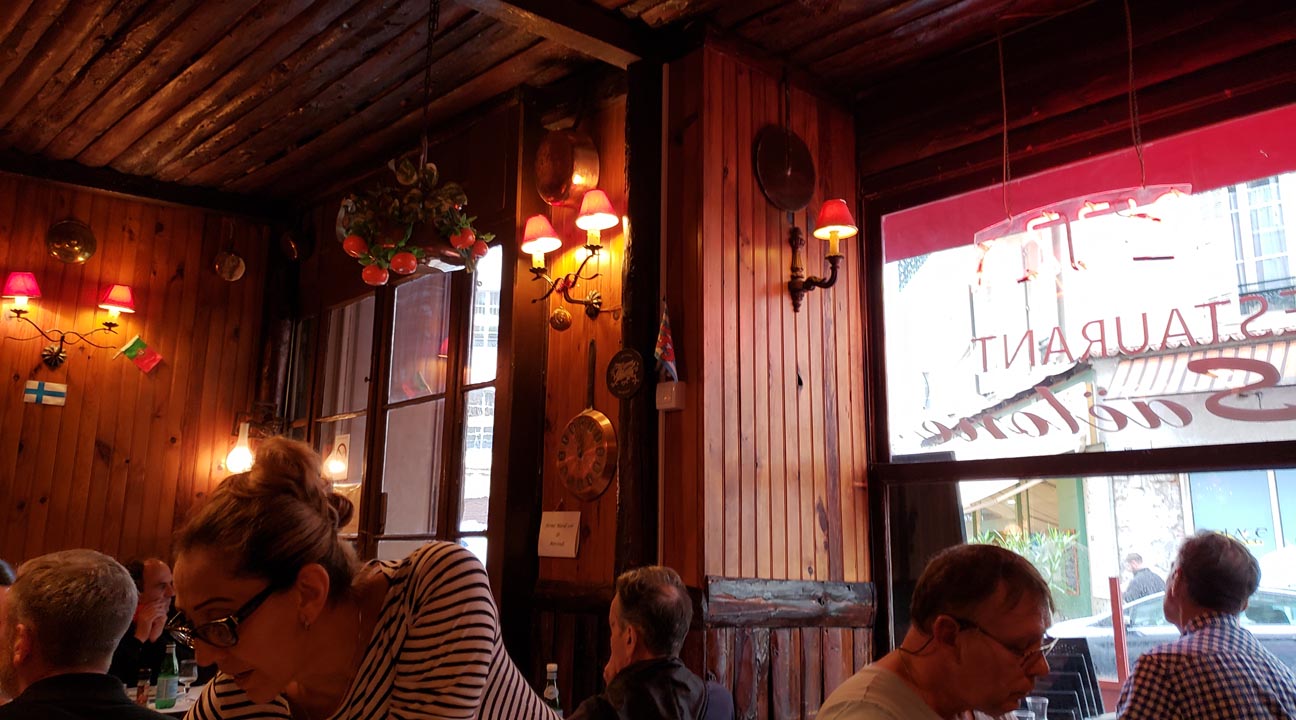

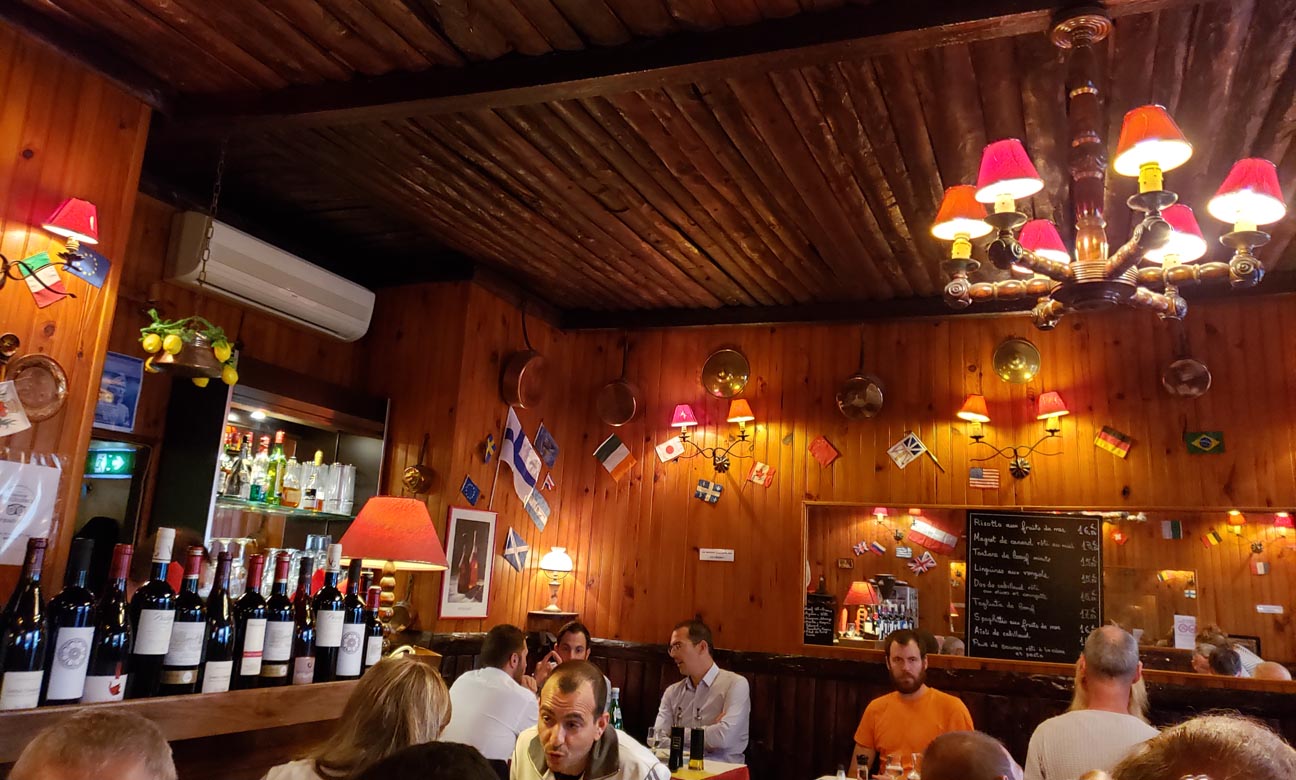
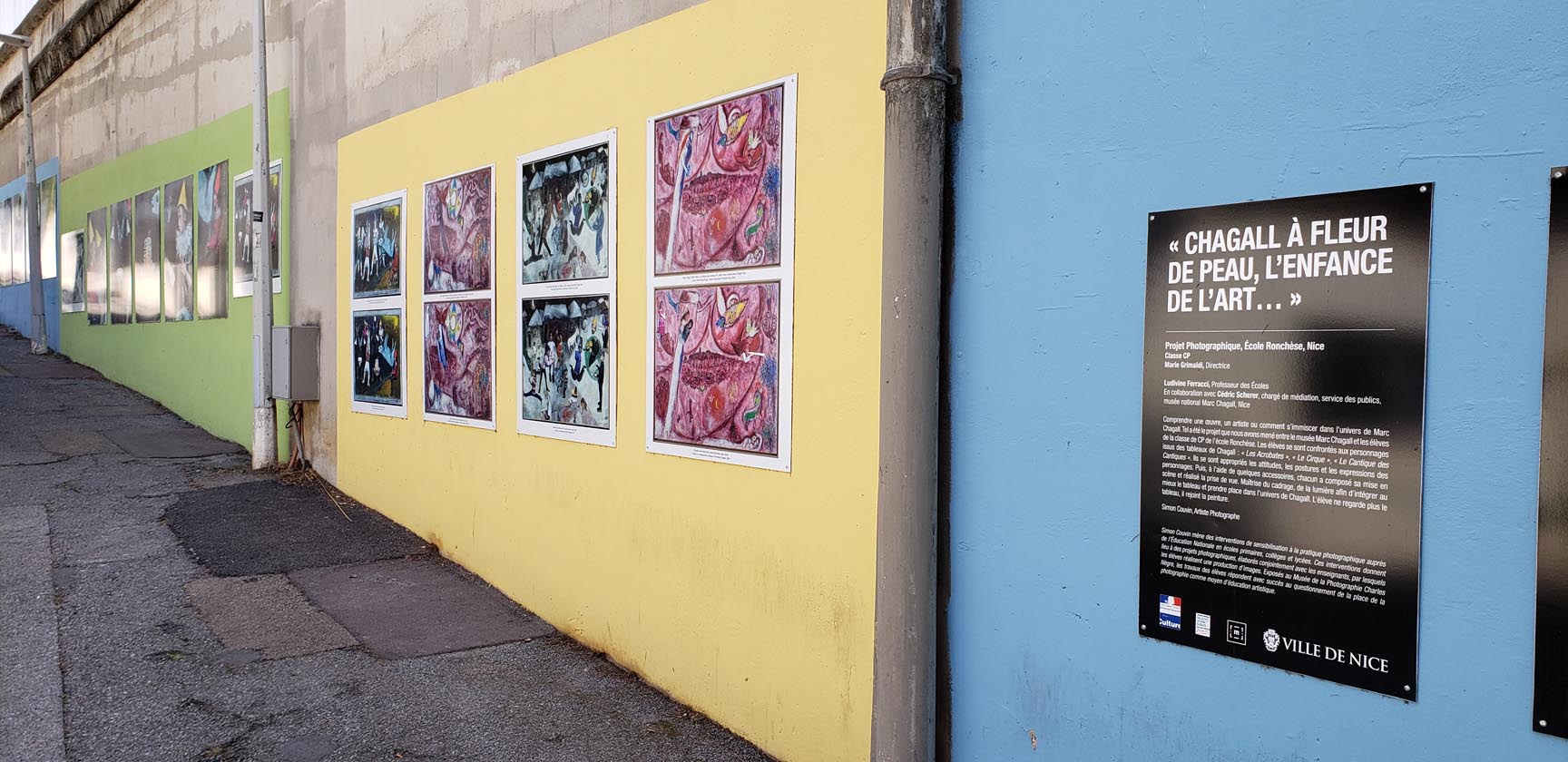
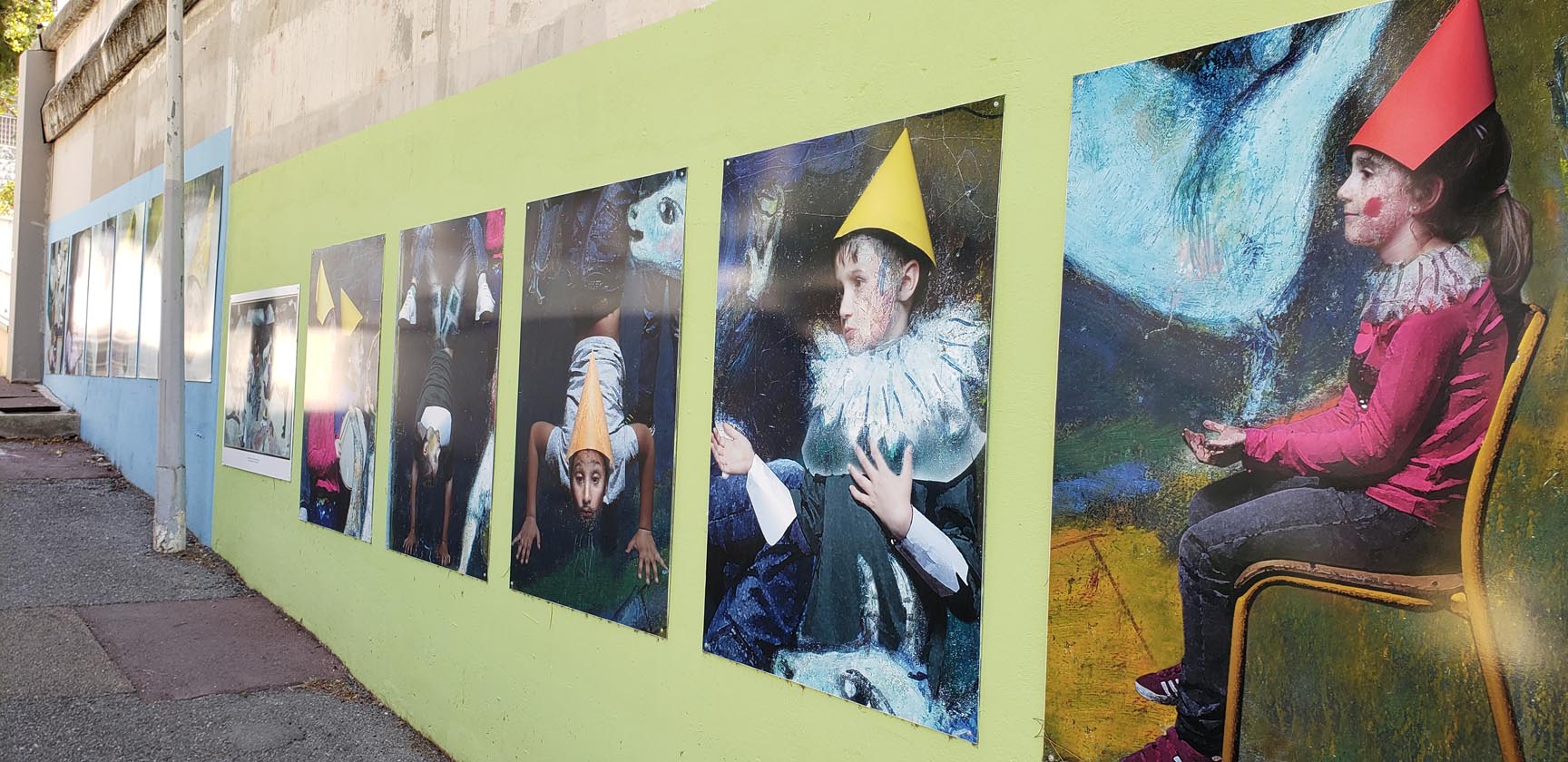
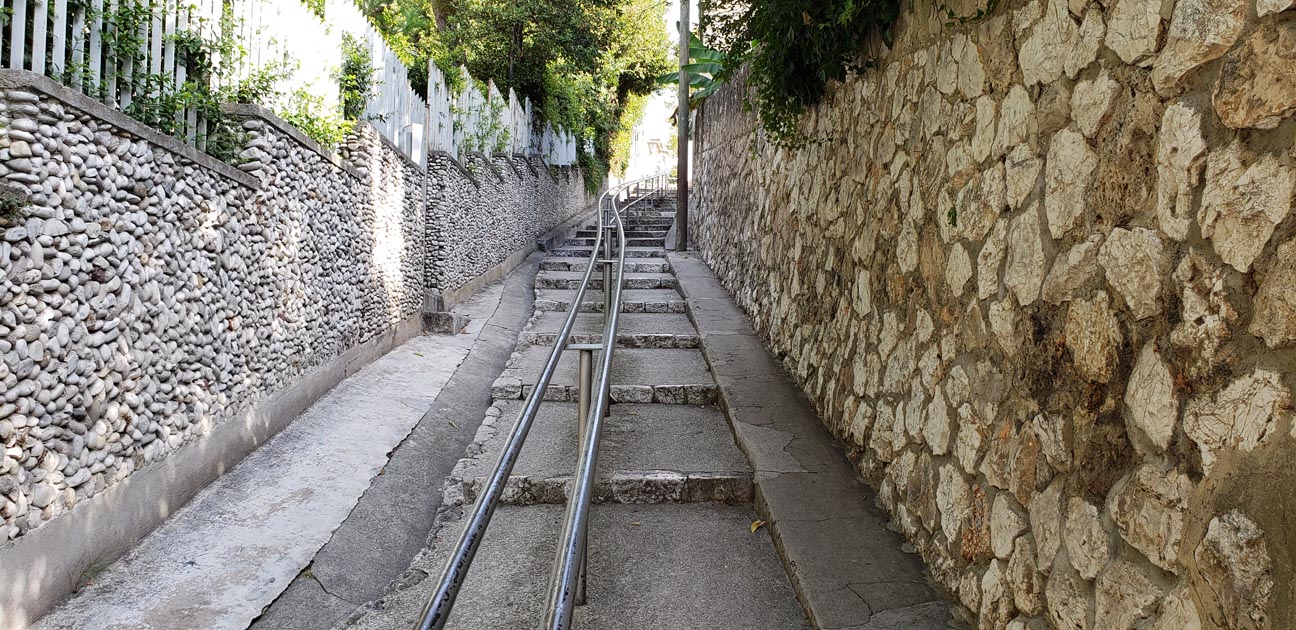

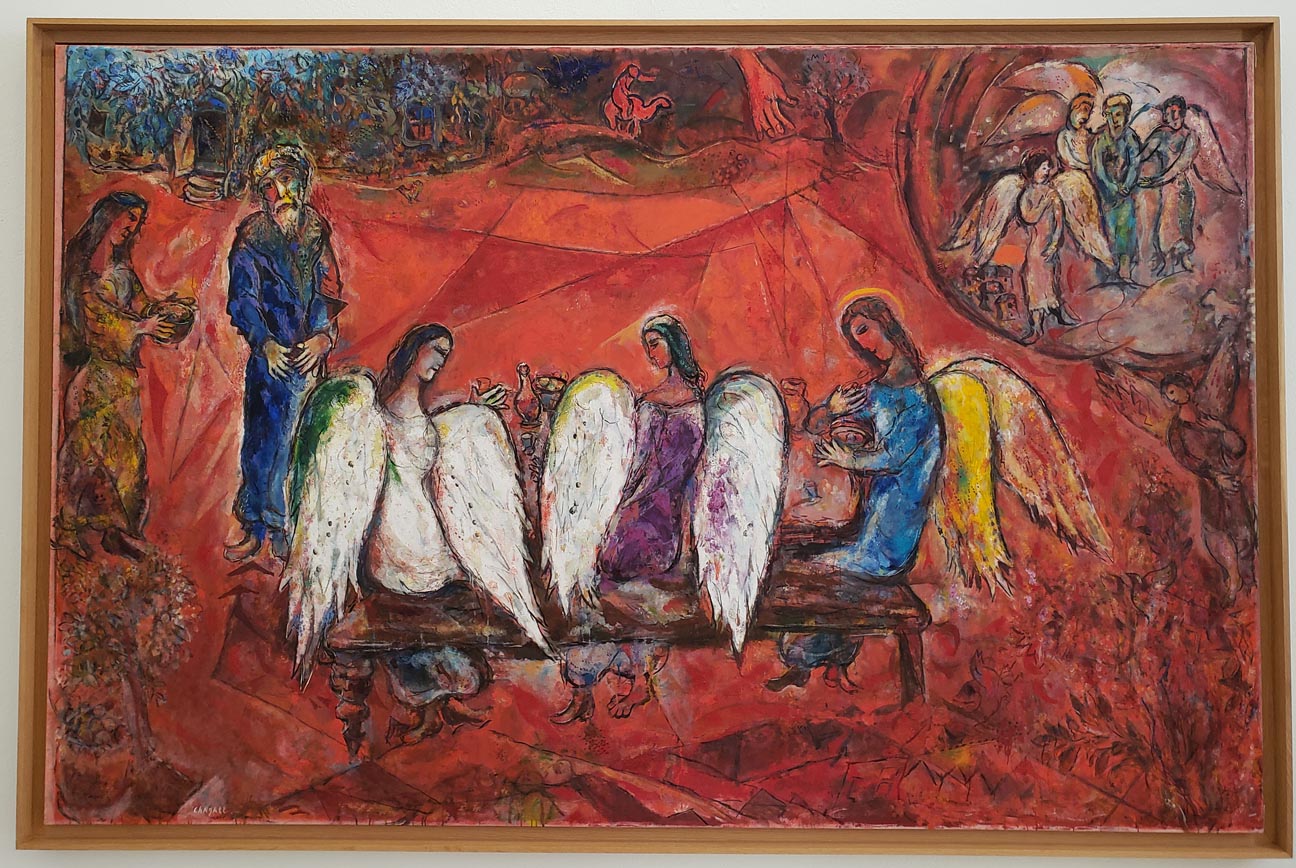

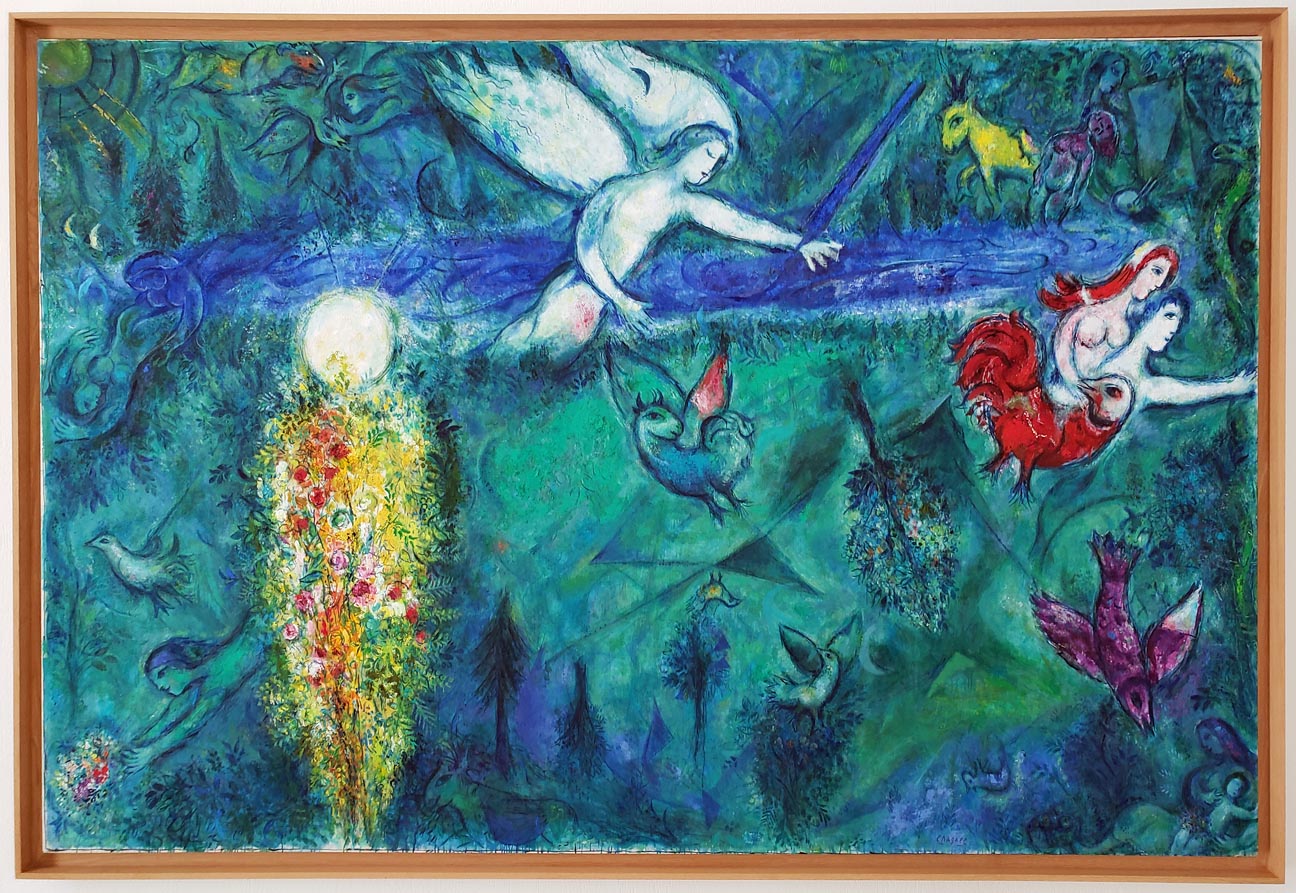


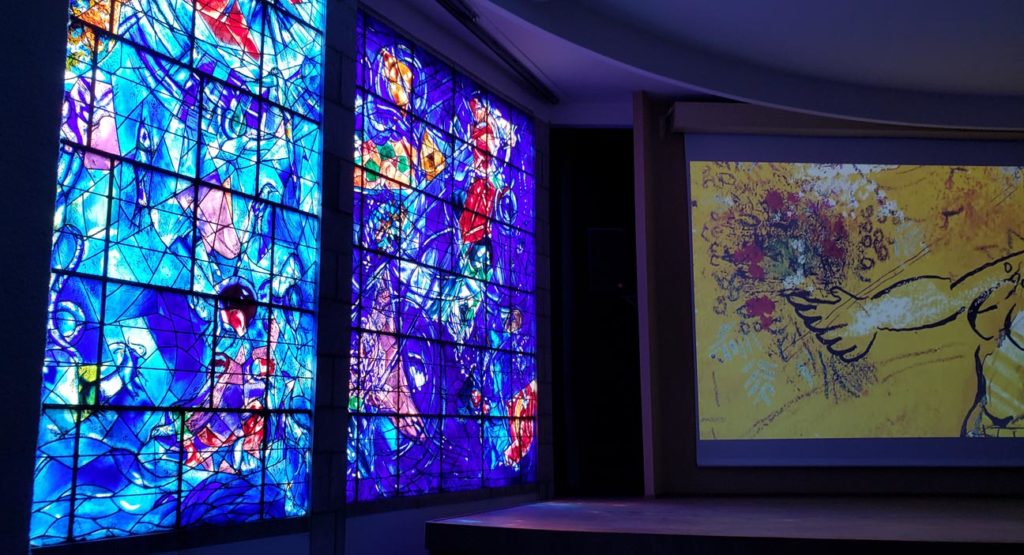
Ja das sind wunderschöne Fenster die Marc Chagall für St.Stephan in Mainz hergestellt hat. Schön das ihr nun in Nice noch mehr Kunst von ihm sehen konntet.
„Diese Fenster machen uns so froh”, ist oft die erste Reaktion der Besucher der Kirche. Sie vermitteln Optimismus, Hoffnung, Lebensfreude.
In seinen neun Kirchenfenstern im Ostchor und Querhaus hat Marc Chagall ein Zeichen gesetzt für französisch-deutsche Freundschaft, Völkerverständigung, jüdisch-christliche Verbundenheit.
Es sind seine einzigen Fenster in Deutschland, von der Glasfläche (177,6 qm) her sein größtes Glaskunstwerk in der Welt, die letzten seines künstlerischen Schaffens (1976-1985).
Naja, als ich erfahren hatte, daß die Festern da waren, konnte ich es kaum glauben, sie anzusehen. Die waren, wie du vielleicht denken kannst sehr fabelhaft. Wie immer, vielen Dank für deine Kommentare..!